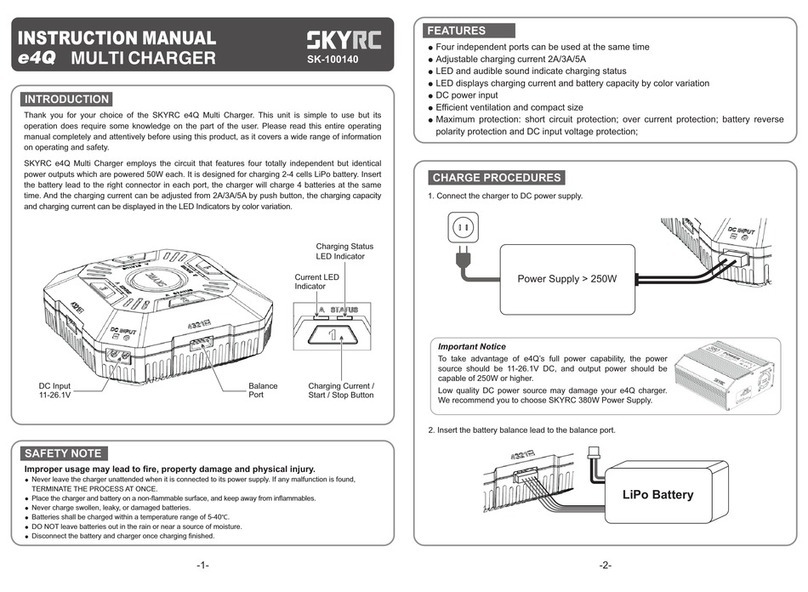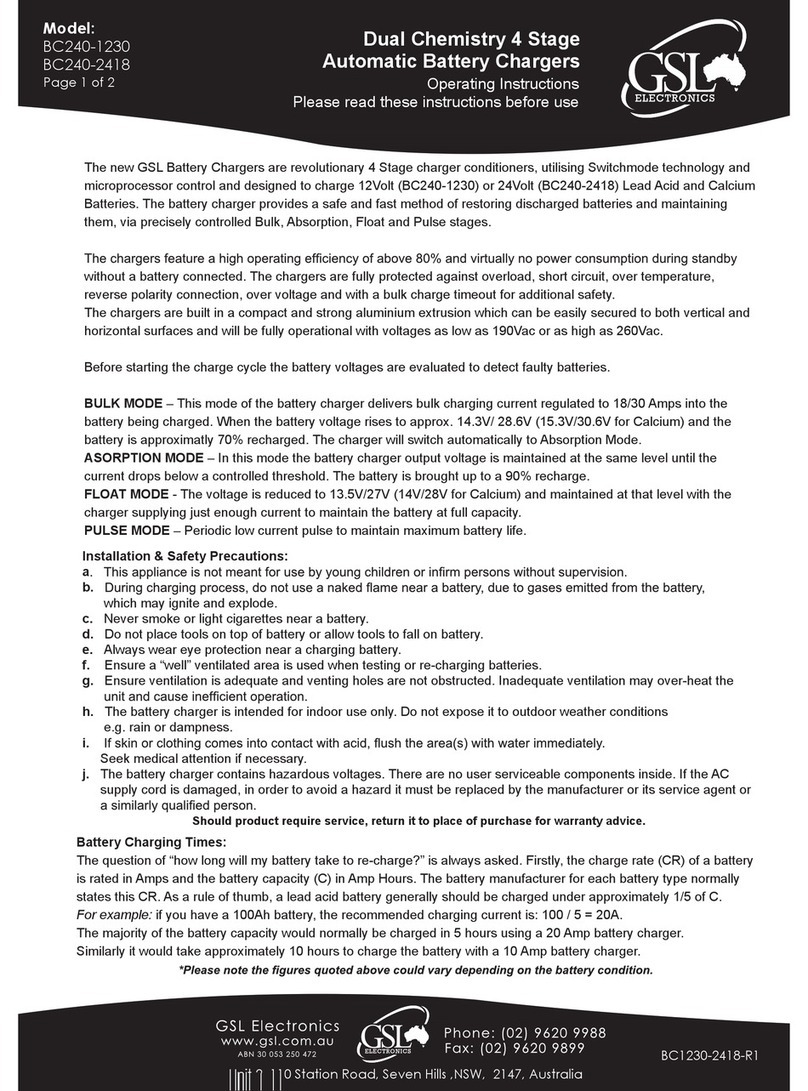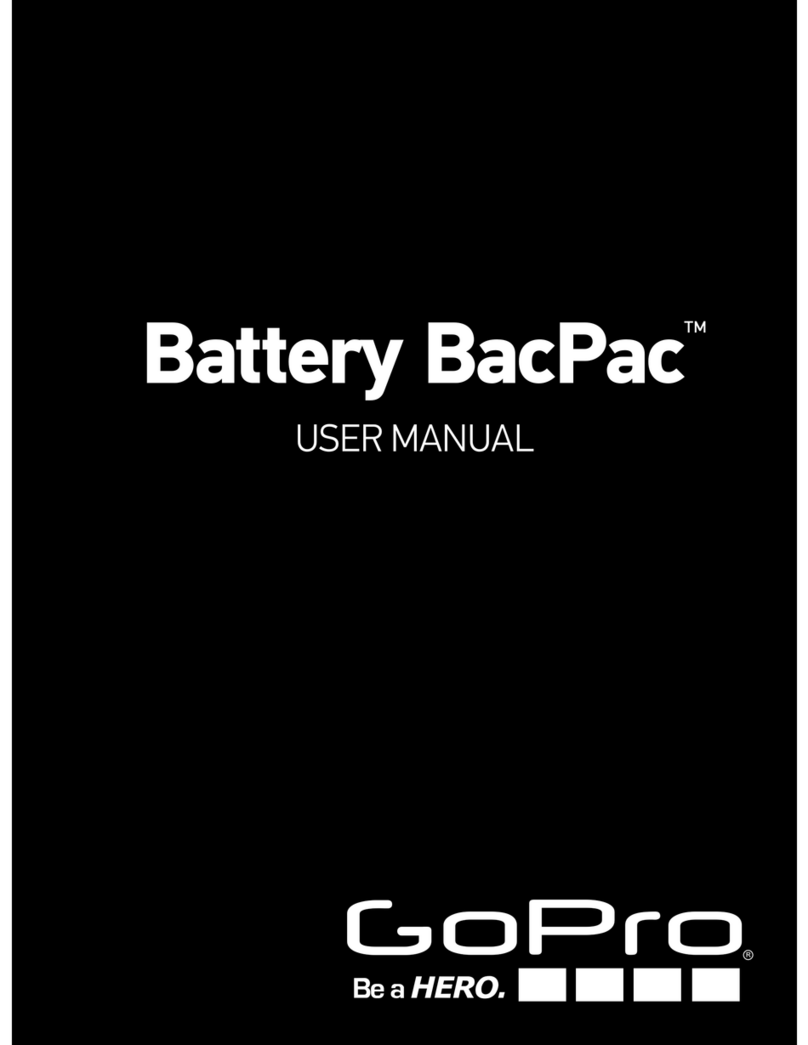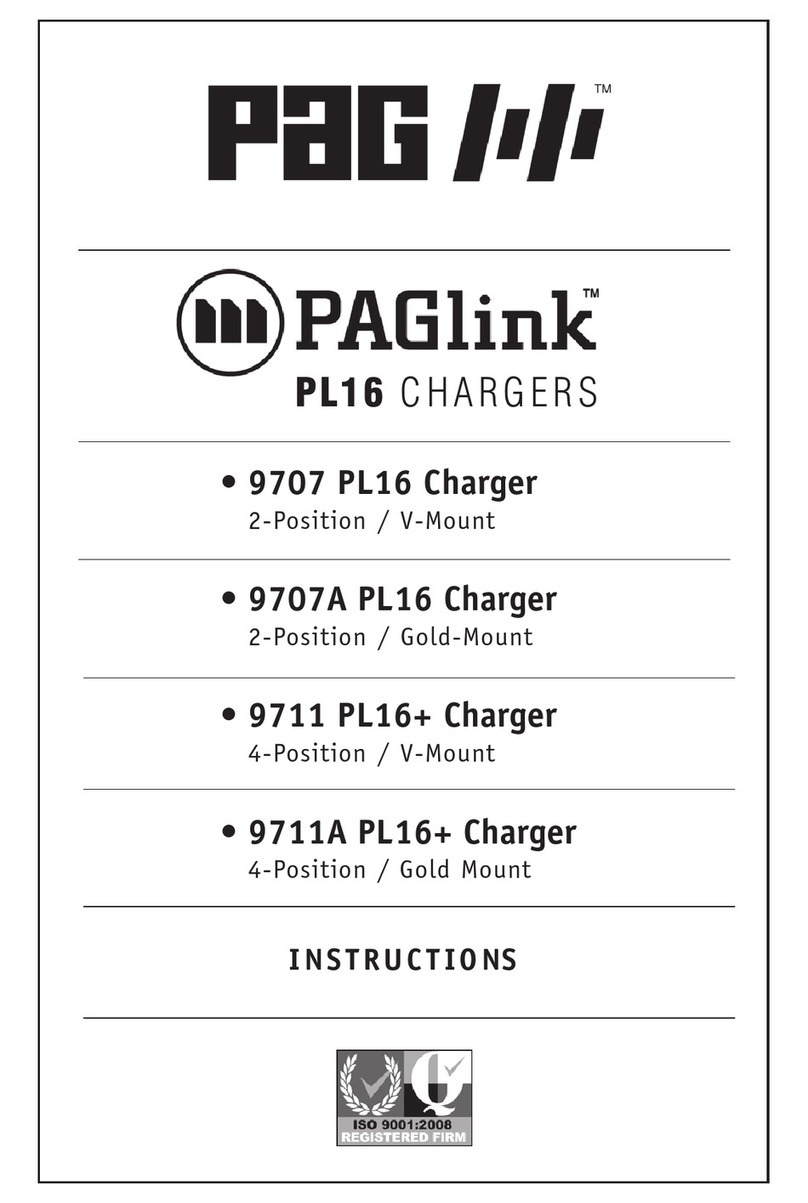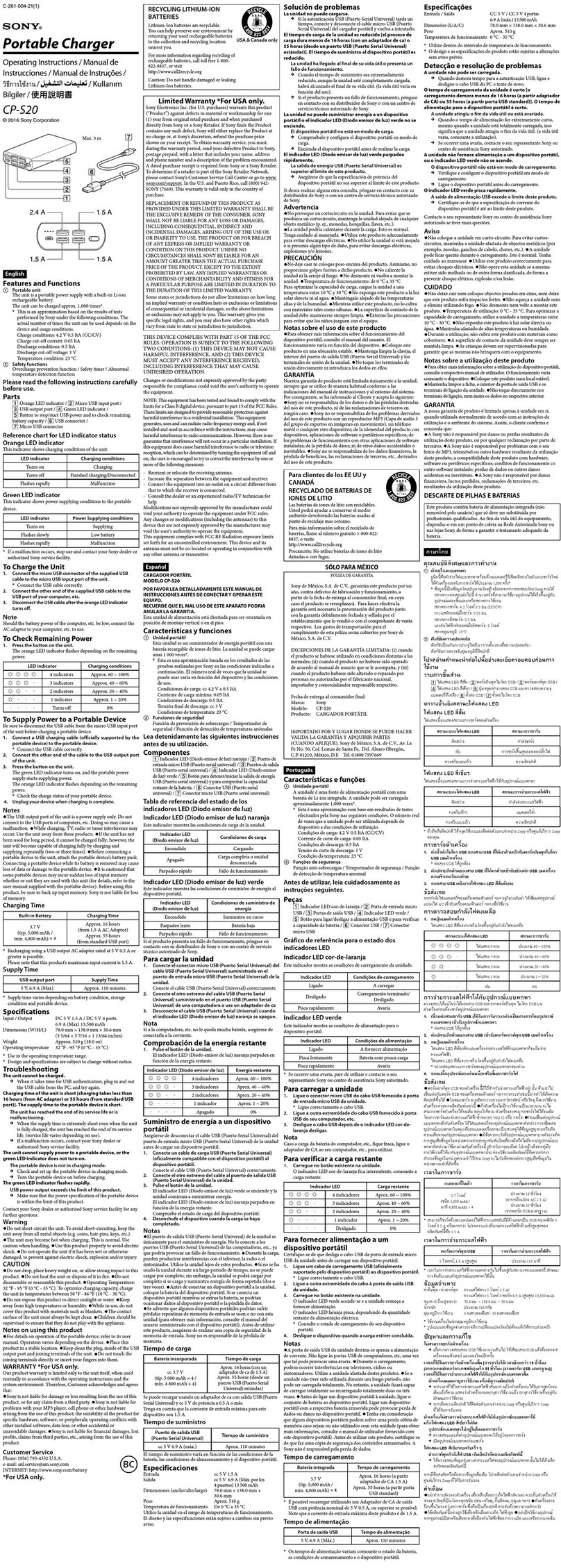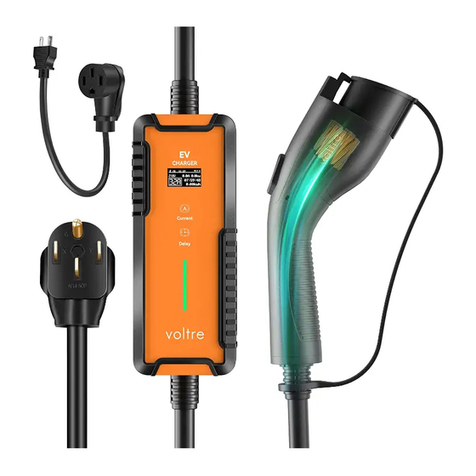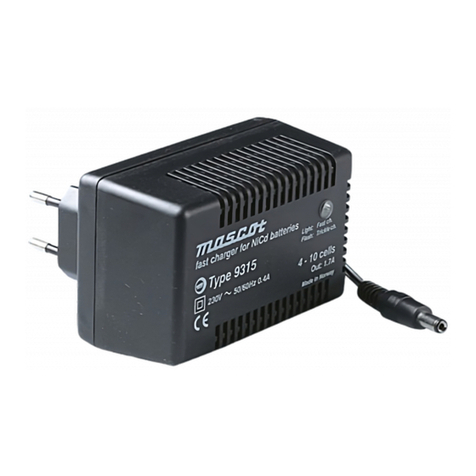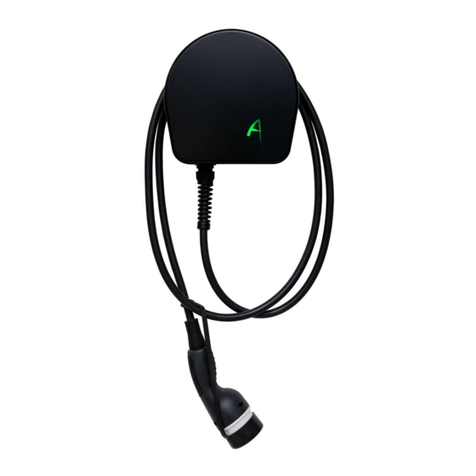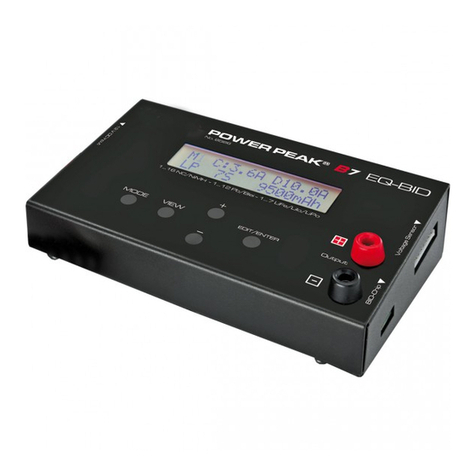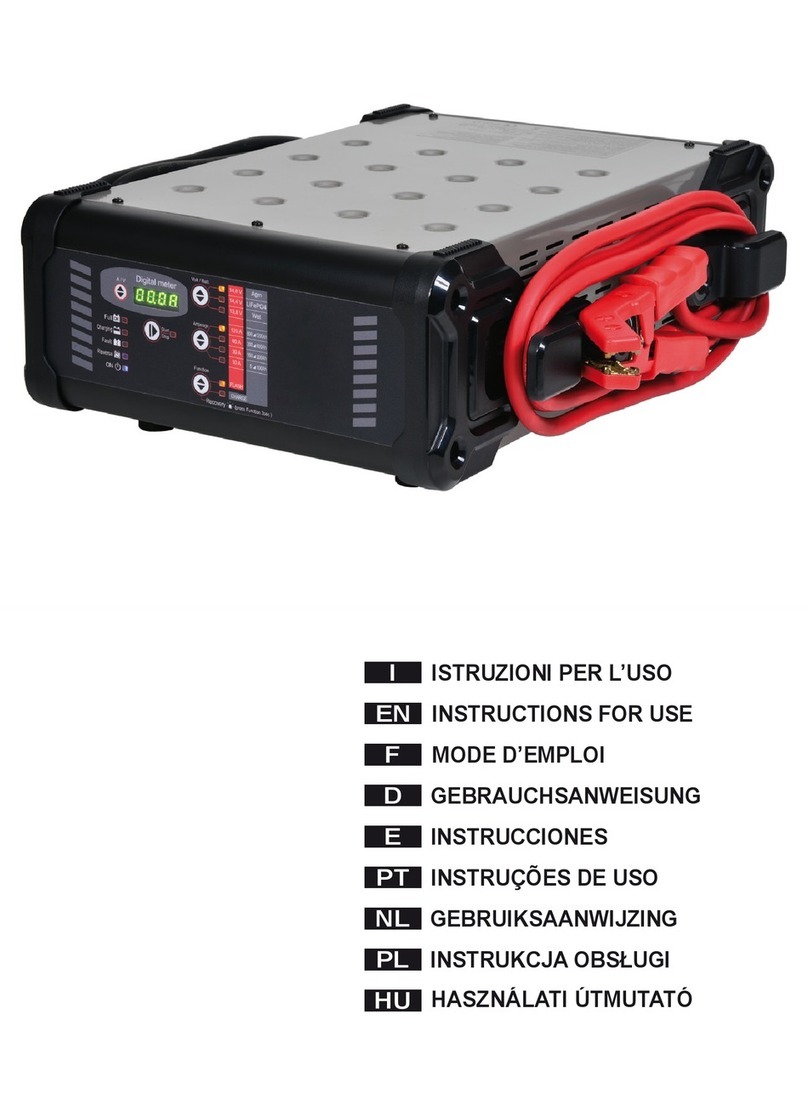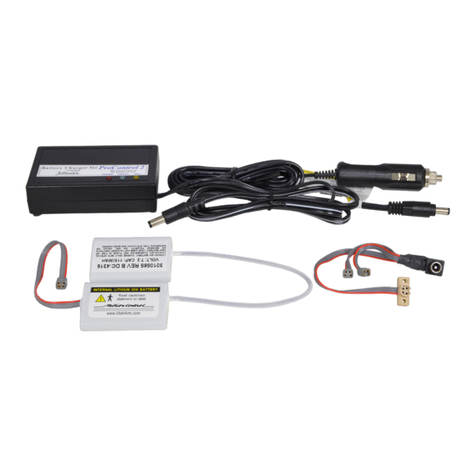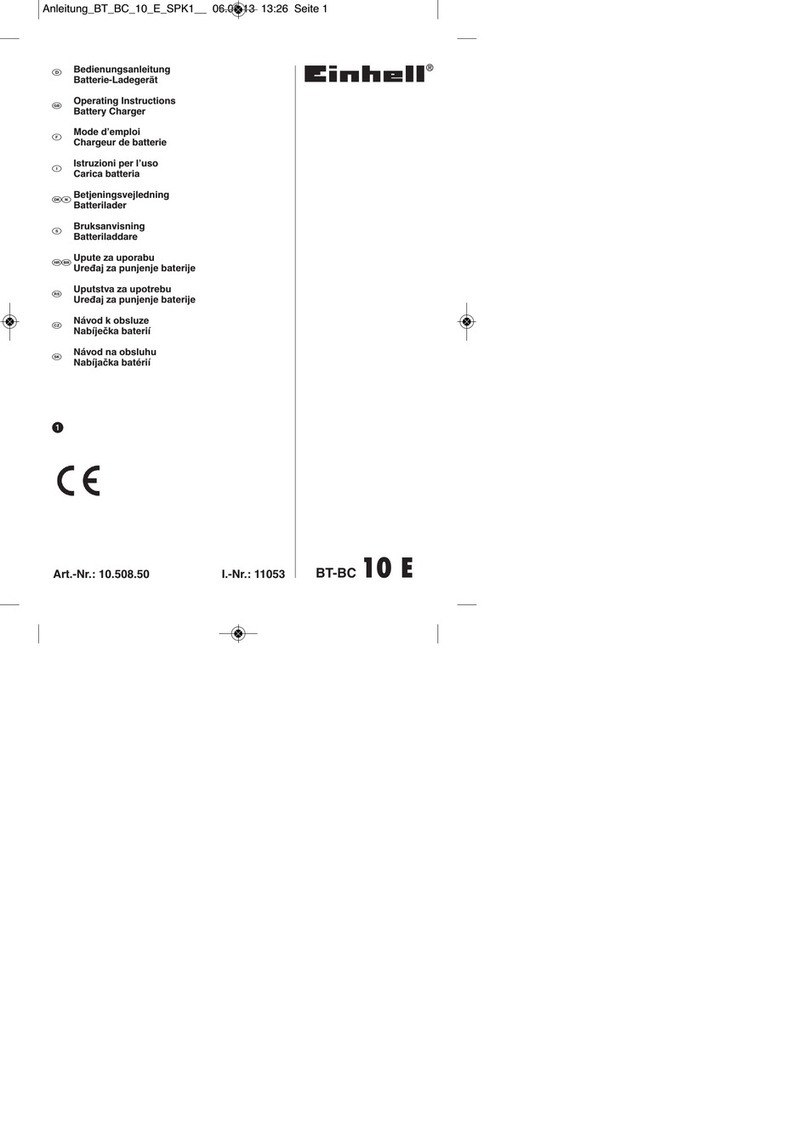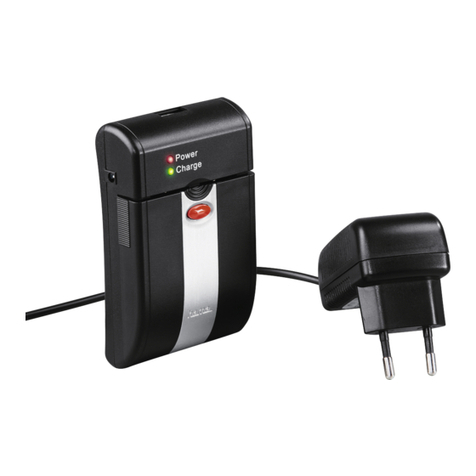Delta MOOVair User manual

Wireless Power
Transfer
Battery
Charging
Industrial
1 kW Wireless Charging System
MOOV air
User Manual and Professional
Installation Guide

2
1 About this document............................................................................................................................... 4
1.1 Purpose of this document ........................................................................................................................ 4
1.2 Target audience ....................................................................................................................................... 4
1.3 Products covered ..................................................................................................................................... 4
1.4 Warning notices and warning symbols..................................................................................................... 4
1.4.1 Warning levels.......................................................................................................................................... 4
2 General safety instructions .................................................................................................................... 5
2.1 EU declaration of conformity.................................................................................................................... 6
3 System description ................................................................................................................................. 7
4 Functional description ............................................................................................................................ 8
4.1 Wireless WPB - WSB communication ..................................................................................................... 8
4.2 Hardware features ................................................................................................................................... 8
4.2.1 WPB......................................................................................................................................................... 8
4.2.1.1 Reset button............................................................................................................................................. 8
4.2.1.2 Status LED operation............................................................................................................................... 9
4.2.2 WSB......................................................................................................................................................... 9
4.3 Output power and de-rating ................................................................................................................... 10
4.3.1 Output operating area ............................................................................................................................ 10
4.3.2 Power vs. input voltage.......................................................................................................................... 10
4.3.3 Power vs. ambient temperature ..............................................................................................................11
4.3.4 WPP & WSP Physical Positioning ..........................................................................................................12
4.4 Efficiency and losses.............................................................................................................................. 12
................................................................................................................. 12
4.4.2 Temperature of the WPP
4.4.1 Factors that influence losses
........................................................................................................................ 13
4.5 Operating limits ...................................................................................................................................... 13
4.6 Physical dimensions .............................................................................................................................. 14
4.6.1 WPU....................................................................................................................................................... 14
4.6.2 WSU....................................................................................................................................................... 14
5 Installation.............................................................................................................................................. 15
5.1 WPB....................................................................................................................................................... 15
5.1.1 Description ............................................................................................................................................. 15
5.1.2 Mounting pattern .................................................................................................................................... 15
5.2 WSB....................................................................................................................................................... 16
5.2.1 Mounting pattern .................................................................................................................................... 16
5.3 WPP and WSP....................................................................................................................................... 16
5.3.1 Mounting pattern .................................................................................................................................... 17
5.4 Metal near the pads ............................................................................................................................... 17
5.4.1 Mounting to aluminium........................................................................................................................... 18
5.4.2 Mounting to ferrous metal ...................................................................................................................... 18
5.5 Installation of multiple pads.................................................................................................................... 19
5.6 User Considerations .............................................................................................................................. 20
5.6.1 ..................................................................................... 20
5.7 Description of connections..................................................................................................................... 22
5.7.1 WPU: AC Input....................................................................................................................................... 22
5.7.2 WPU: Earth stud .................................................................................................................................... 22
5.7.3 WSU: DC Output.................................................................................................................................... 22
5.7.4 WSU: CAN bus connector ..................................................................................................................... 23
5.7.5 WSU: External control connector ......................................................................................................... 23
Critical RF Exposure Installation Requirements

5.7.5.1 Sleep...................................................................................................................................................... 23
3
5.7.5.2 Enable.................................................................................................................................................... 23
5.7.6 WSU: Battery temperature probe........................................................................................................... 24
6 Charge modes........................................................................................................................................ 25
6.1 CAN bus mode
6.1.1 CAN bus hardware specification
6.1.2 System configuration
....................................................................................................................................... 25
............................................................................................................ 25
............................................................................................................................. 25
6.1.3 Basic protocol commands...................................................................................................................... 26
6.1.4 CAN bus watchdog
6.2 Profile mode
6.2.1 System configuration
................................................................................................................................ 26
........................................................................................................................................... 26
............................................................................................................................. 27
6.3 Sleep mode............................................................................................................................................ 27
7 Graphical user interface (GUI) for PC.................................................................................................. 28
7.1 Requirements......................................................................................................................................... 28
7.2 Installing PCAN-USB drivers ................................................................................................................. 28
7.3 Connecting the WSU to the PC ............................................................................................................. 28
7.4 Installing the GUI ................................................................................................................................... 28
7.5 Areas of the monitor tab......................................................................................................................... 29
7.6 Basic operation ...................................................................................................................................... 29
7.7 Charger Configuration
7.7.1 CAN bus configuration
7.8 Using the GUI with the WSU in Profile mode
........................................................................................................................... 30
........................................................................................................................... 30
7.7.2 Profile configuration
7.7.3 General Configuration
...............................................................................................................................
...........................................................................................................................
30
31
......................................................................................... 31
7.9 Data logging
7.10 Updating firmware
........................................................................................................................................... 32
.................................................................................................................................. 32
8 Warranty information.............................................................................................................................33
9 Appendix ................................................................................................................................................34
8.1 Guarantee conditions............................................................................................................................. 33
8.2 Returns procedure ................................................................................................................................. 33
9.1 Evaluating the charger system without a battery ......................................................................................... 34
9.2 Flow chart .............................................................................................................................................. 34
9.3 Troubleshooting .................................................................................................................................... 35
9.4 Charger system fault and status messages
9.4.1
...........................................................................................
.....................................................................................................................................................
36
36Faults
9.4.2 ..................................................................................................................................................... 37Status
9.5 ....................................................................................................................................... 39Default profiles

4
1 About this document
1.1 Purpose of this document
This document is to provide information that will allow the wireless charger system to be used safely
and reliably when it is installed in another product such as an AGV. Whilst the document contains some
information on how to use the charger system as a stand-alone product, this is only for evaluation
Read this document before working with the wireless charger system.
Always follow the safety instructions and guidance messages in this document. This will ensure that the
charger can be safely installed, commissioned and operated.
Delta Energy Systems is not responsible for damage or harm resulting from failure to follow the safety
and operating instructions set out in this document.
1.2 Target audience
charger system into a larger system such as an AGV. The engineer must be trained and approved for
working with electrical and electronic equipment. The engineer must also be experienced in how to
apply safe working practices for connecting and charging batteries.
Although this documentation is not aimed at the end users of the wireless charging system, it does
the system after installation.
1.3 Products covered
WPU (Wireless Primary Unit), transmitter, TX: WPU 1000 W 1 AC US
WPU 1000 W 1 AC EU
WSU (Wireless Secondary Unit), receiver, RX: WSU 1000 W 24 V
WSU 1000 W 48 V
1.4 Warning notices and warning symbols
This document uses the following warning notices and symbols to describe potential dangers and the
measures necessary for reducing these dangers.
1.4.1 Warning levels
DANGER
Indicates a dangerous situation that will always
lead to death or severe injuries if not avoided.
WARNING
Indicates a dangerous situation that can lead to
death or severe injuries if not avoided.
CAUTION
Indicates a dangerous situation that can lead to
light or medium injuries if not avoided.
ATTENTION
Indicates possible material damage that can be
caused to other objects by the charger system.
If necessary, the warning labels are also marked
with warning symbols indicating the source of the
danger.
High electrical voltages or currents
Hot surfaces
General danger
Sharp edges

The firmware and/or hardware may be changed at any time without prior notice. For this reason it is
possible that parts of these instructions, technical data and images in this documentation to differ
slightly from the product in your possession. All points described in these instructions only serve the
purpose of clarification and may not correspond to every situation. Legal claims cannot be made on
the basis of this document.
5
2 General safety instructions
DANGER
Electric shock
Potentially fatal voltages are present in the charger system during operation.
►No item in the charging system contains user serviceable parts and enclosures
should not be opened for any reason.
WARNING
►People must be > 20 cm away from the WPP.
►People with medical devices such as metallic prostheses, cardiac pacemakers and
cochlear implants, must be > 1mfrom the WPP.
►Warning signs giving the above advice must be clearly displayed at the WPU
installation.
►Operators must be trained toinform them of the EMF risk, and tokeep enough
distance from the WPP at all times, including when not charging.
►The wireless charging system is not suitable for use in location where children are
likely tobe present.
►Charging must take place in an area where the general public are forbidden to
• Do not open any enclosure and do no try to repair it by yourself. The product does not contain user
serviceable parts. Opening any enclosure will invalidate the product warranty.
• No cable or connector on any part of the system can be altered or removed. Doing so will invalidate
the product warranty.
• Firmware must not be downgraded. Doing so will invalidate the product warranty.
• Do not use the device if it is visibly damaged.
• All cables must be routed to avoid a trip hazard and accidental damage of the cables.
• Operate the adapter only on earthed sockets with 100 to 240 VAC, 50 / 60 Hz. If the power supply
is not safe at the installation site, ask the competent power supplier.
• To interrupt the power supply of your device, disconnect the power supply from the power socket.
When disconnecting, always hold the plug. Never pull the cable.
• Operate the device at -20 to 50 °C and maximum 95% relative humidity. The range of the ambient
temperature affects the charging speed, as the charging control of most chargers reduces the
output current at higher temperatures
enter.
EXCLUSION OF LIABILITY

6
2.1 EU declaration of conformity
Hereby, Delta Energy Systems (Germany) GmbH declares that the radio equipment types WPU 1000 W
1AC EU / WSU 1000 W 24 V / WSU 1000 W 48 V are in compliance with Directive 2014/53/EU.
The full text of the EUdeclaration of conformity is available at the following internet address:
https://filecenter.deltaww.com/Products/Download/21/2110/1kW%20Wireless%20Charging%20System
_EU%20DoC_EN_20207.pdf
CAUTION
Material damage
No metallic objects are allowed between the pads during charging, as they may get
heated and damage the plastic cover.
►Select the installation site where no metallic objectscan go into the air-gap and stay
on the plastic cover of the pads.
►The pads must be mounted vertically. If the user insists on mounting the pads
horizontally, then they will take full responsibility toensure there are no metallic
objects between the pads during charging.
►Heated metallic objects could ignite combustible materials if also present.
This equipment has been tested and found to comply with the limits for a Class A
device, pursuant to EN 55011 Group 2, EN 55032 Group 2, as well as a Class A
digital device, pursuant to part 15 of the FCC Rules. These limits are designed to
provide reasonable protection against harmful interference when the equipment is
operated in a commercial environment. This equipment generates, uses, and can
radiate radio frequency energy and, if not installed and used in accordance with the
user manual, may cause harmful interference to radio communications. Operation of
this equipment in a residential area is likely to cause harmful interference in which
case the user will be required to correct the interference at his own expense.
CAUTION
Hot surfaces
All parts of the charging system can become hot during operation.
►Always wear safety gloves before handling, or allow 30 minutes toallow the charger
system tocool when not operating.
CAUTION
Sharp edges
The heatsink attached tothe WPPhas sharp edges.
►Protective gloves should be worn when handling the heatsink.
WARNING
ELECTROMAGNETIC INTERFERENCE POSSIBILITY

7
3 System description
The wireless charger system consists of two main assemblies:
1. The WPU: Wireless Primary Unit (transmitter, TX)
a. WPB (Wireless Primary Box) connected to AC
The WPU is typically installed on the wall of the infrastructure.
2. The WSU: Wireless Secondary Unit (receiver, RX)
b. WSB (Wireless Secondary Box) thatproduces a DC output that is typically used to charge a
battery. The output the WSB producescan be controlled via CAN bus, or via inbuilt charging
The WSU is typically installed on moving equipment containing a battery, such as an AGV or pallet
jack. However the wireless charging system can be used in other applications where there is a
need to transfer power over an air gap.
WPB
WPP
WSP
WSB
WSUWPU
WPB
WPP
WSP
WSB
WSU
WPU

8
4 Functional description
Typically the WPB is permanently supplied with AC, and the WSB is permanently connected to the
battery. Charging can commence when:
The operating frequency for wireless power transfer (WPT) is 160…250 kHz at steady state,
depending on the air-gap, misalignment and output voltage.
●The WPPand WSPare correctly aligned: face-to-face,parallel,and within the specified
misalignment and air gap ranges
●and the charger system is instructed to start charging, either via CAN busor by the charger
system's ENABLE input
●The charger system does not detect any fault conditions.
●The WPB and WSB are able tocommunicate with each other.
4.1 Wireless WPB - WSB communication
For internal system communication the WPB and WSB both contain a radio frequency transceiver
module with integral antenna. The transceiver module is IEEE Std. 802.15.4 compliant and has Radio
The transceiver module operates at ISM Band 2.405 to 2.480 GHz, with maximum RF transmit power
as 2.09 dBm. The wireless communication WPB and WSB uses a proprietary protocol and cannot be
accessed by the user.
4.2 Hardware features
4.2.1 WPB
Reset button
Earth stud
To AC socket
To WPP
Thermal expansion ventPlastic window for WPB/WSB
communication
Status LEDs
Reset button
Earth stud
To AC socket
To WPP
Thermal expansion vent
Plastic window for WPB/WSB
communication
Status LEDs
4.2.1.1 Reset button
The WPB has a non-latching push button that can be used to restart the charging process.
The charger has been considered for use at an altitude of up to 3000 m, pollution degree
2 environment and overvoltage category II application.

9
4.2.1.2 Status LED operation
The WPB has three LEDs that show basic information about the charger system's status.
AC present Charging Fault
No input
Ready On
Charging On Flash
Charge complete1On On
Fault On Flash
4.2.2 WSB

10
4.3 Output power and de-rating
4.3.1 Output operating area
The charger system can provide an output within the bounds of the graphs below.
24 V operating area
48Voperatingarea48V operating area
Using the 48 V charger system as an example:
●Between 24V and 38V the charger system canprovide a maximum of 3 A
●Between 38V and 48V the charger system canprovide upto 20.8 A
●Between 48 V and 60 V the charger system can provide a maximum of 1,000 W, and will
reduce theoutput current to achieve this
4.3.2 Power vs. input voltage
The charger system can operate from an AC supply of 85 to 265 VAC. However when input voltage is
less than 100 VAC, the output power is automatically reduced to avoid the input current exceeding 13 A.

11
4.3.3 Power vs. ambient temperature
The maximum temperature the case of the WSB can reach is limited to ensure user safety. The charger
system will limit its output power when required so the maximum case temperature of 90 °C is not
exceeded. The graph below shows test results of the charger system attempting to provide full power
to cool the charger system.
For example:
●At 20 °C ambient the charger system can run continuously at full power
●At 30 °C the charger system will run at full power for approximately 42 minutes and then eventually
reduce its output power to 930 W
600
650
700
750
800
850
900
950
1000
0 10 20 30 40 50 60 70 80 90 100 110
Output power (W)
Time duration (min.)
20°C ambient
30°C ambient
40°C ambient
50°C ambient
Mounting the metal surface of the WSB to a heatsink or other large metal item such as an AGV chassis
will improve its thermal performance.
●Volume of air surrounding the WSB
●The ability of hot air to escape the vicinity of the WSB
●The ability of cool air to enter the WSB installation
●The proximity of the WSB to other hot components
●Emissivity of surrounding materials
The WPU can run continuously at full power in an ambient temperature of up to 40°C.
required.

12
4.3.4 WPP & WSP Physical Positioning
faces as shown below.
Gap Misalignment
Power transfer capability at different air gap / misalignment conditions
At the charger system's nominal output voltage, the full 1,000 W can be delivered in all combinations of
gap and misalignment up to 20 mm. However, when the output voltage is above nominal value the gap
and misalignment does have an impact on the amount of power that can be delivered, with the worst
case being at the charger system's maximum working voltage, and is shown in the following table:
Air-gap Max. misalignment for 1000 W
0 - 6 mm 20 mm
8 mm 18 mm
10 mm 17 mm
12 mm 16 mm
14 mm 15 mm
16 mm 10 mm
18 - 20 mm 5 mm
For example
●If the gap is10mm, 1,000 W can bedelivered if the misalignment is 17mmorless
●If the misalignment is 5 mm, 1,000 W can bedelivered if the gap is20mmorless
4.4
Input: 230 VAC, Output: 24 V at 41.7 A (1,000 W), Misalignment: 0 mm, Gap: 10 mm
Item Loss
WPB 53 W 95 %
WPP 15 W 98 %
WSP 7 W 99 %
WSB 20 W 98 %
Total 95 W 91 %
4.4.1 Factors that influence losses
Criteria Losses per component
WPB WPP WSP WSB
Input voltage ↑ ↓ ---
Output voltage ↑ ↑ ↑ - -
Output power ↑ ↑ ↑ ↑ ↑
Misalignment ↑ ↑ ↑ - -
Gap ↑ ↑ ↑ - -
For example, the WPB runs more efficiently at higher input voltagesandthereforeitslossesarelower.Inputvoltagedoes not have an impact on the losses of any other component.

13
4.4.2 Temperature of the WPP
As well as the ambient temperature, four other factors can cause the primary pad to become hot: gap,
misalignment, output power, and output voltage. The WPP has a heatsink attached by default to ensure
operation over a wide range of conditions. If the user wishes to remove the heatsink then they must
ensure the pad temperature can be kept low by using the charger system at low gap and misalignment,
or by only using the charger system in environments where the ambient temperature is not high.
The user may consider removing the heatsink if their operating conditions lie below the lines on the
following graph for maximum power and maximum output voltage.
6
8
10
12
14
16
18
20
-10 -5 0 5 10 15 20 25 30 35 40 45
Air-gap (mm)
Ambient Temperature (°C)
0 mm misalignment
10 mm misalignment
15 mm misalignment
20 mm misalignment
If the WPP becomes too hot, the charger system will self-protect by stopping operation until the
temperature drops to an acceptable level.
4.5 Operating limits
●Operation in ambient above 50 °C not recommended
●Operation at gaps of larger than 20 mm is not guaranteed
●Operation at misalignment of larger than 20 mm is not guaranteed
●20 mm misalignment will not work at above 10 mm gap regardless of temperature or heatsink
●15 mm misalignment will not work at above 15 mm gap regardless of temperature or heatsink
●10 mm misalignment will not work at above 19 mm gap regardless of temperature or heatsink

14
4.6 Physical dimensions
on request.
required.
4.6.1 WPU
200
192
960
60
1,120
17.3
39
280
200
See section 4.4.2 for
details on the conditions
that allow the pad heatsink
to be removed.
4.6.2 WSU
500
50 149 385 Ø160
28
82
19.5
168
149
82
62
117
100
380162
2819
495
500

15
5 Installation
5.1 WPB
5.1.1 Mounting considerations
The WPB has an ingress protection rating of IP65: it is completely dust proof, and can be exposed to
water jets from all angles. However, it should not be submerged or exposed to high-pressure water jets.
Communication window
not covered
Fins vertical and against
mounting surface
5.1.2 Mounting pattern
The WPB should be secured with M4 screws.
125 77.5
180
6

16
5.2 WSB
that the WSB is protected against ingress to IP40 and therefore must be protected from water. The
As previously mentioned in section 4.3.3 (Power vs. ambient temperature), it is recommended that
the WSB is mounted to a metal surface that can provide heatsinking. This will allow the continuous
operation in a wider range of operating conditions.
The plastic cover of the WSB should not be covered, especially by metal. Similarly, the vehicle housing
should have a non-metallic area that will allow the WPB and WSB to communicate.
5.2.1 Mounting pattern
The WSB should be secured with M4 screws.
5.3 WPP and WSP
The two pads are the key components used for the wireless power transfer and the following items are
important for safe and reliable operation:
●The plastic covers of the Primary Pad and the Secondary Pad must be face-to-face during
charging.
●Pad gap and misalignment must be within acceptable the ranges during charging.
●Metallic objects are not allowed between the pads during charging.
respect to each other.
The recommended minimum bend radius of the pad cables is as follows:
●Primary cable 110 mm
●Secondary cable 80 mm
Important
user insists on mounting the pads horizontally, then they will take full responsibility to ensure there are
no metallic objects present between the pads during charging.
The pads have an ingress protection rating of IP65: they are completely dust proof, and can be
exposed to water jets from all angles. However, they should not be submerged or exposed to high-
pressure water jets.

17
5.3.1 Mounting pattern
Both pads have the same dimensions and physical appearance, and should be secured with M4
screws. If the WPP heatsink is used, it should also be secured using M4 screws.
82.7 75.2
75.2
4 171.2
6
188
5.4 Metal near the pads
There are no issues when mounting the base of the pads to non-metallic surfaces such as plastic. The
active surfaces of the pads can be completely covered by non-metallic material, but the thickness of
the material should be taken into account when considering the “gap” when aligning the pads.
When mounting to metal, the misalignment must be no worse than 20 mm and the guidance in
following sections must be followed otherwise unacceptable heat will be generated which will damage
the charger system and possibly create a hazardous situation.

18
5.4.1 Mounting to aluminium
●The base of the pads can be installed directly onto aluminium.
Aluminium
pad
clearance
●
15 mm tothe edge of the pad.
Aluminium
pad
clearance
5.4.2 Mounting to ferrous metal
●If the WPP is tobe mounted toferrous metal e.g. steel, the pad heatsink must be used.
●P
●The base of the WSP can be mounted directlyto steel if a≥2 mm thick aluminium shield is
placed between the pad and the steel. The shield should extend at least 20mm beyond the
pad in all directions.
Aluminium
pad
clearance
●
pad.
Aluminium
pad
clearance

19
5.5 Installation of multiple pads
Two or more WPP can be installed in the same area but must be separated as follows:
If the heatsinks are used on the WPPs then the heatsinks can be touching
If the heatsinks are not used then the pad edges must be separated by at least 40 mm
≥40 mm

20
5.6 User Considerations
5.6.1 Critical RF Exposure Installation Requirements
WARNING: DURING CHARGING THERE WILL ELECTRIC AND MAGNETIC FIELDS BETWEEN
However, it is still necessary to take precautions to work safely with the charger.
The installer of the system must provide adequate training to all operators and place warning signs /
warning lights / restrictions accordingly. A physical restriction must be in place to prevent operators
or by-standers from coming closer than 20 cm to the pads of wireless charger during operational
charging. This barrier may be met by the physical characteristics of the placement of the wireless
charger in the application, for example if the WSP can be kept ≥ 20 cm from the edges of the vehicle,
as this would mean there is no possibility of a user physically being able to be within 20cm of the pads
during charging.
It is recommended a 15’’ / 38 cm keep-out zone be marked around the WPP with accompanying
warning signs saying not to enter the zone. This will result in any human near the charging area being
warned to keep a safe distance from the WPP.
The recommend keep-out areas for three installation scenarios are described as follows :
• EN 62311:2008
• FCC 47 CFR part 2.1091
• ISED RSS-102 Issue 5
• Users must be > 20 cm away from the pads.
• Operators (if any) must be informed that they could be exposed to EMF, and that they
must keep enough distance from the WPP at all times, including when not charging.
• Users with medical devices, such as metallic prostheses, cardiac pacemakers, implanted
defibrillators, and cochlear implants, must stay at least 1 m away from the pads.
THE PADS. DURING OPERATION, HUMAN BODIES MUST BE KEPT A DISTANCE OF ≥ 20 cm
FROM THE PADS. PLEASE NOTE AND FOLLOW THE OPERATION AND INSTALLATION
INSTRUCTIONS IN SECTION 3.3 BELOW. IT IS THE RESPONSIBILTY OF THE INSTALLER TO
PROVIDE SUFFICIENT WARNINGS, KEEPOUT RESTRICTIONS AND TRAINING TO ALL
PERSONNEL.
Active charging will generate electric and magnetic fields between the pads. The charger has been
designed to minimise stray fields and has been tested as complying with the following standards:
Table of contents
Other Delta Batteries Charger manuals
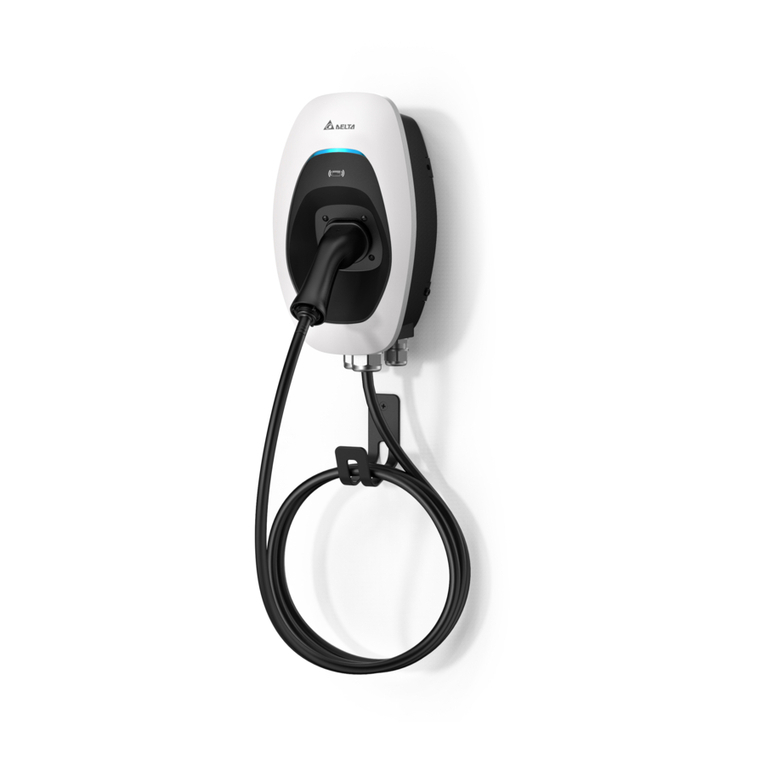
Delta
Delta AC MAX User manual

Delta
Delta 1902335 User manual
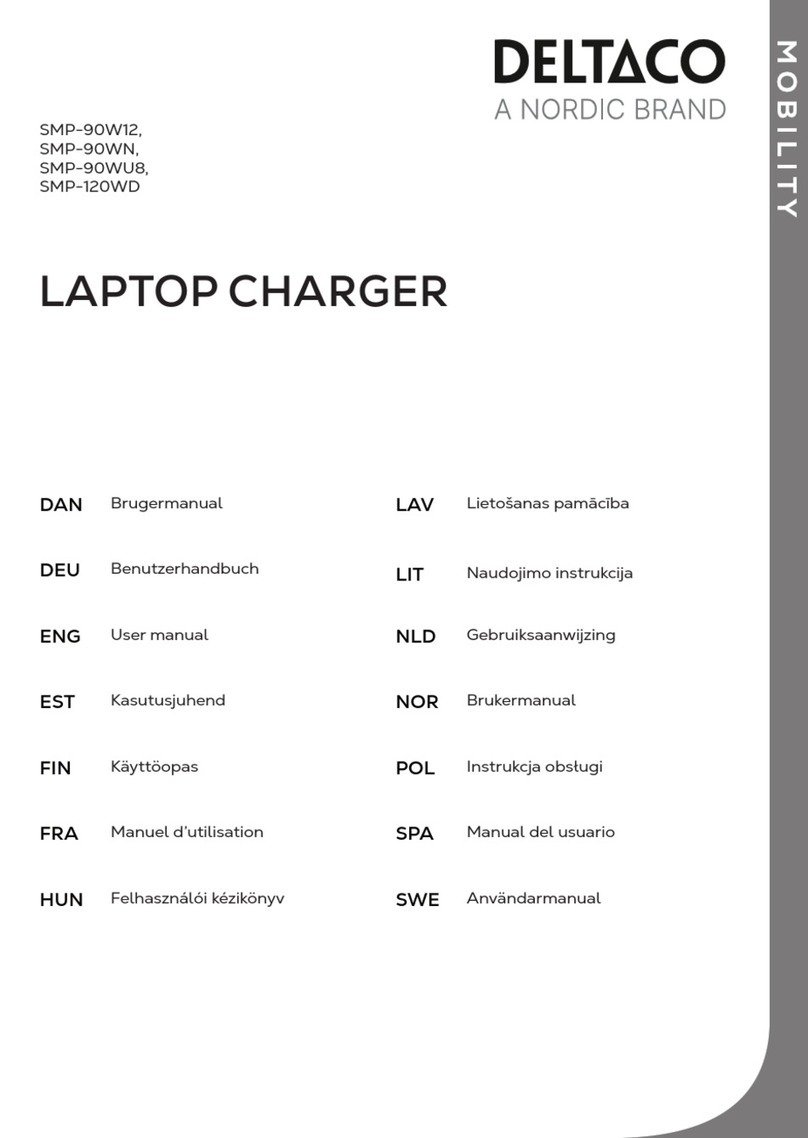
Delta
Delta SMP-90W12 User manual

Delta
Delta AC MAX User manual
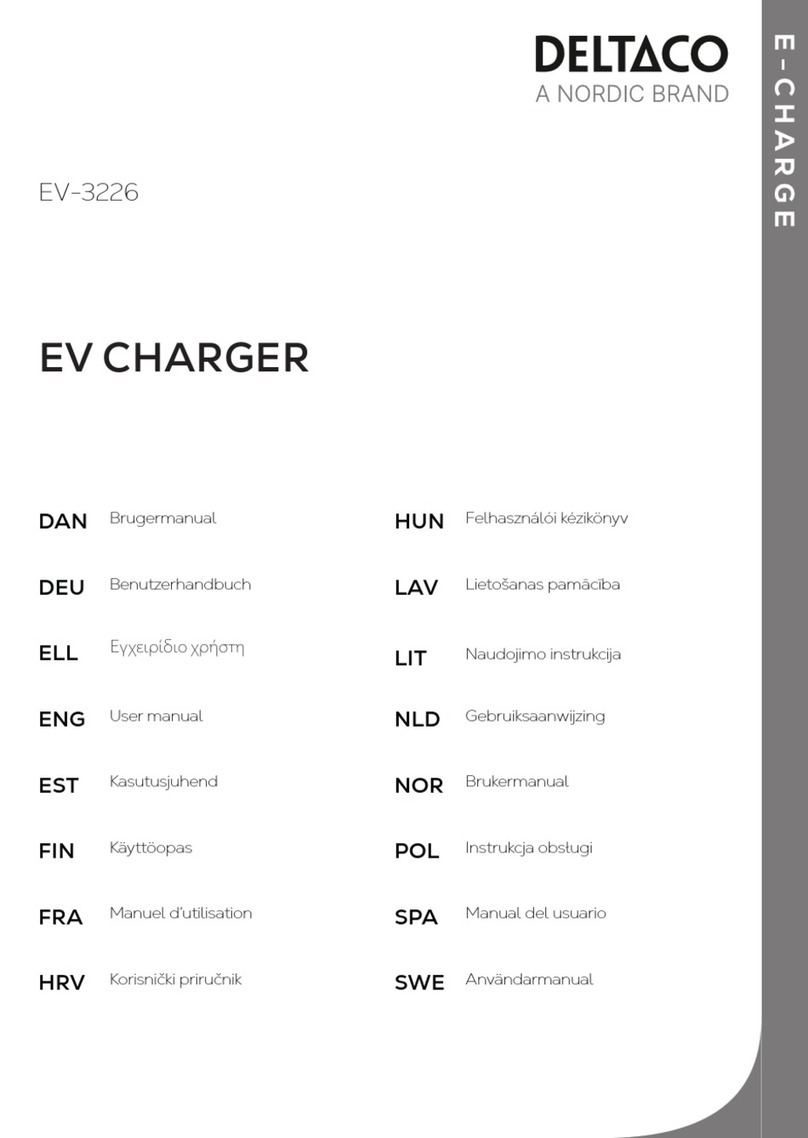
Delta
Delta EV-3226 User manual

Delta
Delta QI-1038 User manual

Delta
Delta 1902435 User manual
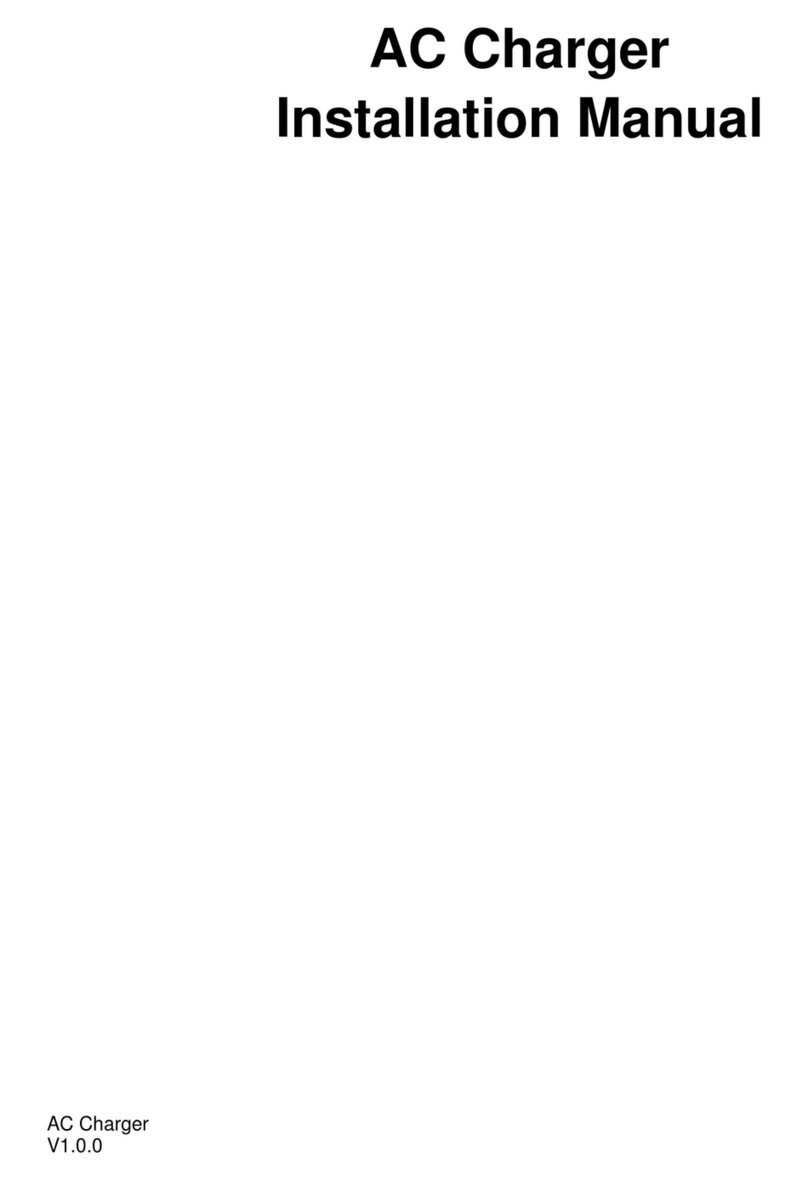
Delta
Delta AC Wallbox User manual
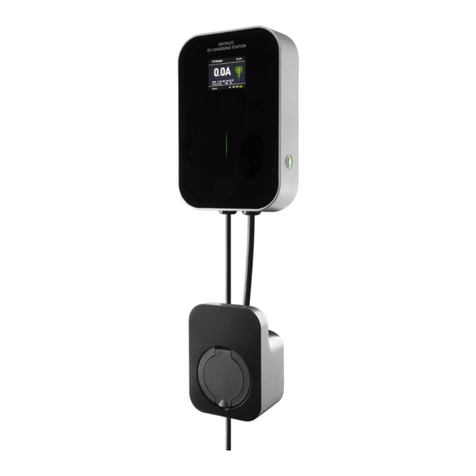
Delta
Delta EV-4120 User manual

Delta
Delta AC MAX User manual
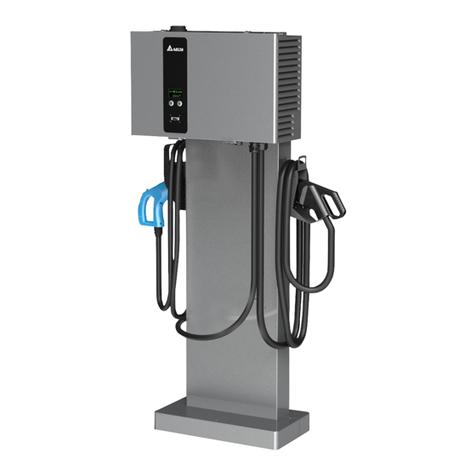
Delta
Delta DC Wallbox Stand User manual
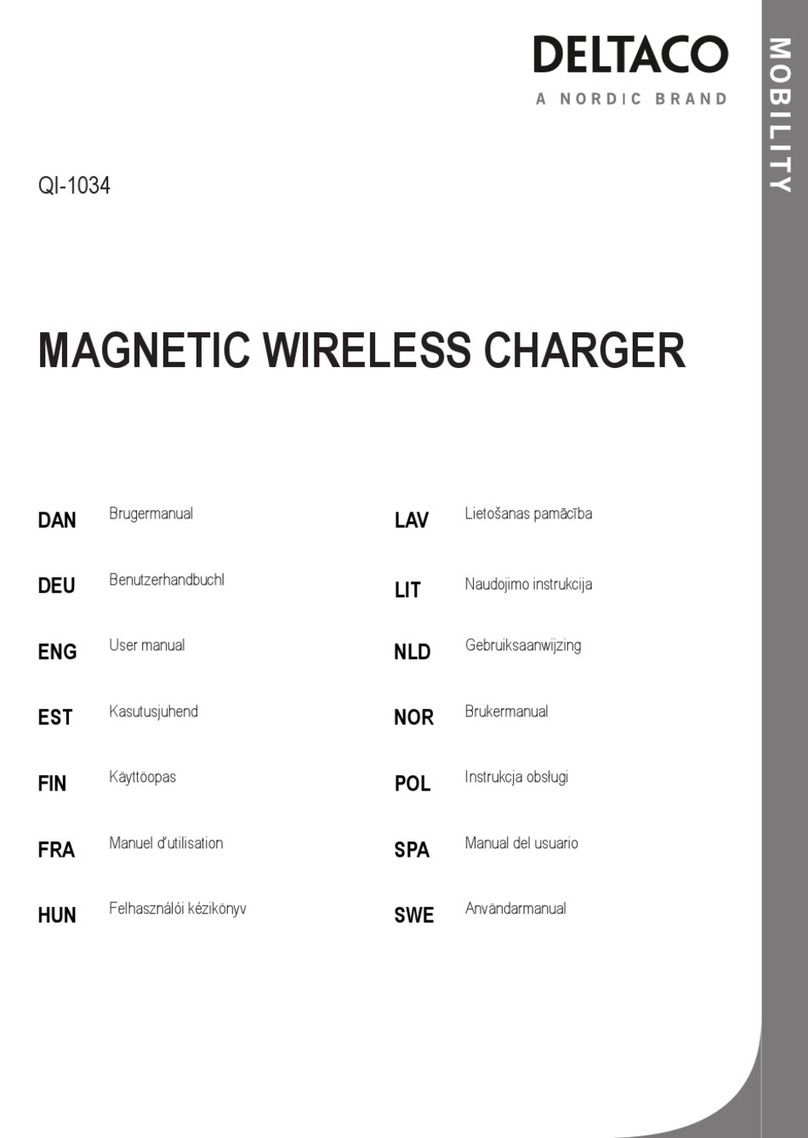
Delta
Delta QI-1034 User manual
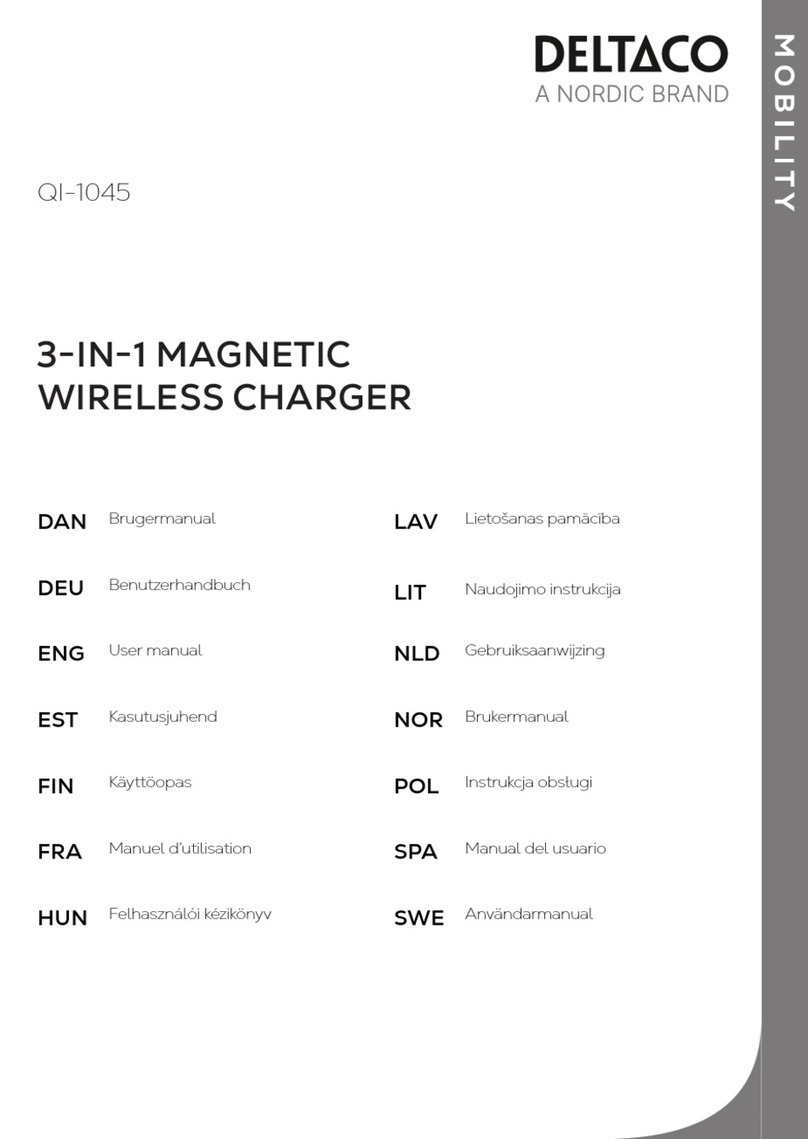
Delta
Delta QI-1045 User manual
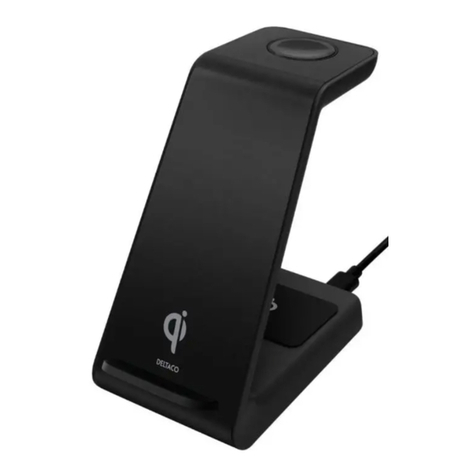
Delta
Delta QI-1037 User manual
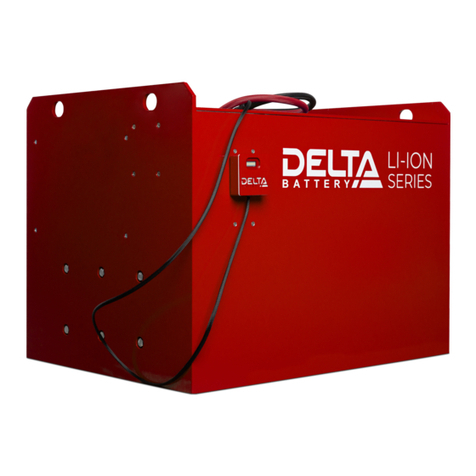
Delta
Delta LI-ION Series User manual

Delta
Delta AC MAX User manual

Delta
Delta QI-1028 User manual

Delta
Delta 1902275 User manual
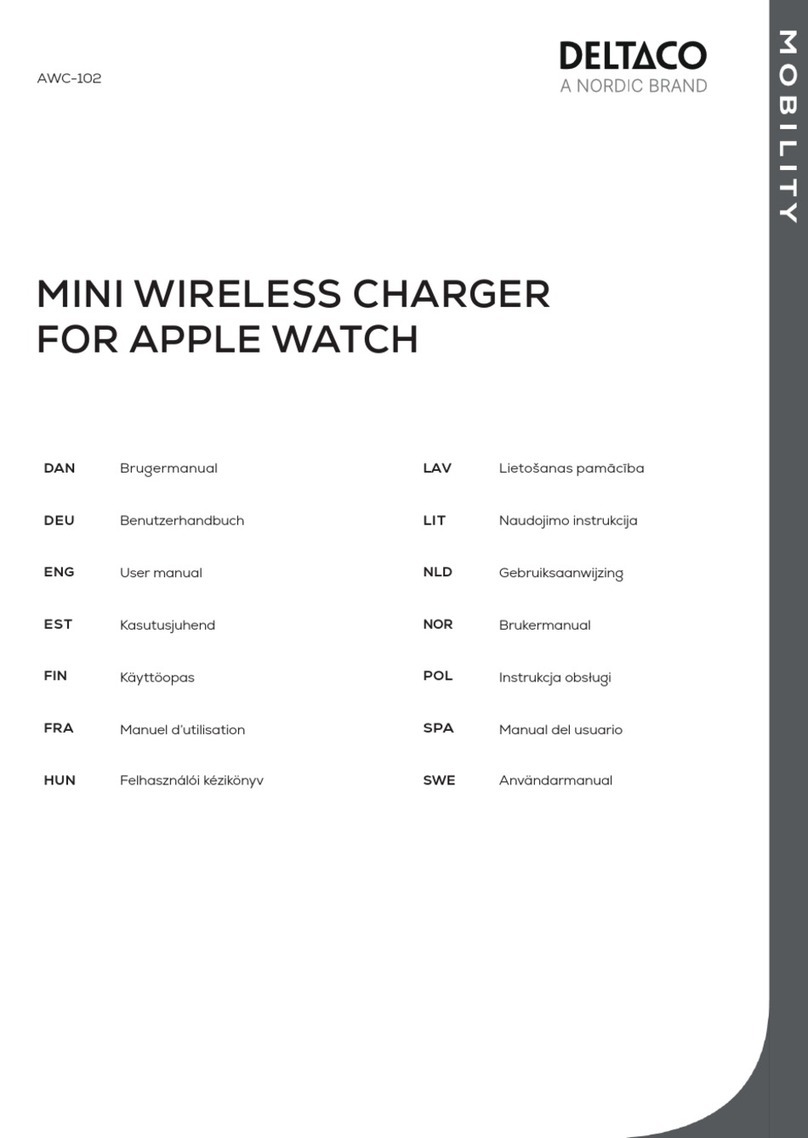
Delta
Delta AWC-102 User manual
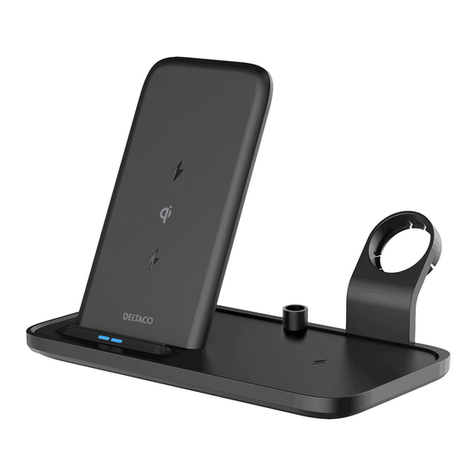
Delta
Delta QI-1036 User manual
